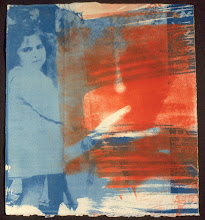In late August a few years ago, I fulfilled my life long desire to be a garbage man.
When I was little I was interested in two professions that both were not considered proper: Street sweeper or shepard. Both were conducted outdoors, in motion, alone.
That summer thousands of middle eastern refugees were amassed at the train station of Eidomei, waiting for the borders to open and continue their way to the promised land of hope, the Northern Europe. But politics, government, rules and regulation had it so that thousands of desperate people, old and young, men and women, peaceful and trouble makers were all standing side to side waiting Uber’s the summer heat.
So I hitched a ride and went to Eidomeni to help out cleaning the uncontrollable mass of accumulated trash. I started working under the mid afternoon sun, with a big plastic bag in hand, bending over and picking up what the refugees had left behind.
The earth near the train tracks was filled with green and blue bottle caps, plastic bottles, food wrappers, pill wrappers, stale bread left on the trees because it is a sin to leave it on the ground, socks, children's clothes, overcoats, papers written in Arabic, I found a torn pink ID card without a photo, issued by the greek government, a demolished smart phone, broken crates, a dead dog in a plastic bag, with flies buzzing around it, I managed to have it buried in a field, I found toy trucks , pieces of paper forms to fill out on both Greek and Arabic. I found clothes buried in the fields, plastic bags, lots of plastic around.
While I was hand picking all this trash, my mind went to other times when on the same spot at the train station of Eidomeni, two different groups of migrant people stopped.
In one of them were my grand parents with my mom as a toddler. They had come with the exchange of population between the Greeks and the Turks in 1923. They had come to a foreign land to start anew. Every time my grandmother was going to travel by train was in panic.
The other group were the Jews who were transported in freight trains to unknown destination, to their demise. My mom has always been talking about the water canteen that was left behind. It was given to her to fill it with water by a passenger on the death train. While she was filling the canteen the train started rolling on the tracks and the person she was trying to help was left without his metal bottle and without water. She tried to run and catch up unsuccessfully.
The trash those people were living behind was very different from what was was left by the Syrian refugees in Eidomeni.
In the past they may have lost glass or metal bottles, handkerchives, head scarves, hair pins, keys. Today the trash that is left behind is wrapers and containers, 90% plastic. We consume a tremendous amount of petroleum to make products for a single use that end up in the landfills destroying the Earth.
When I was collecting the clothes I found half buried in the ground, it felt like I was touching the souls of the people who left behind their empty shells.






















